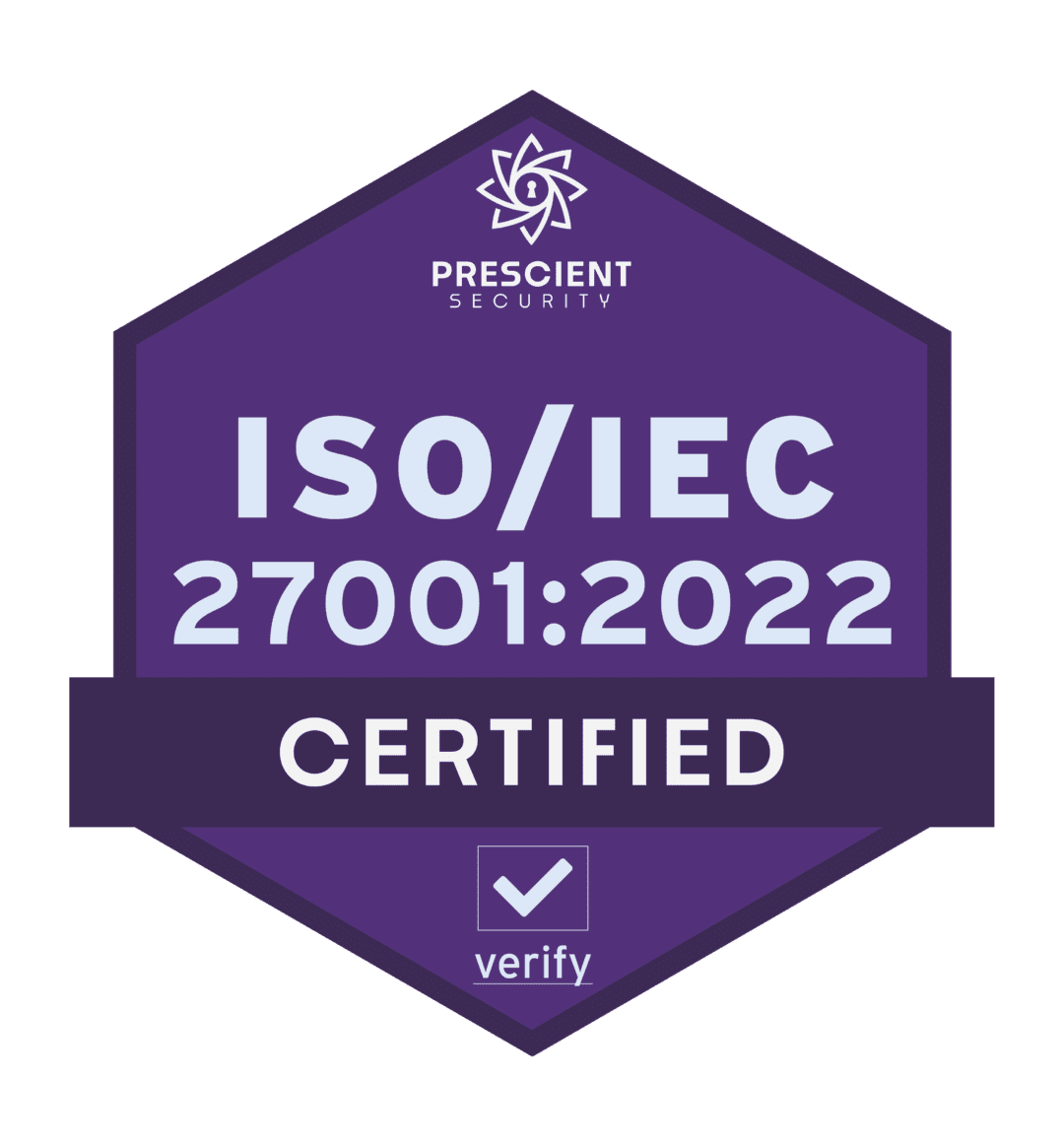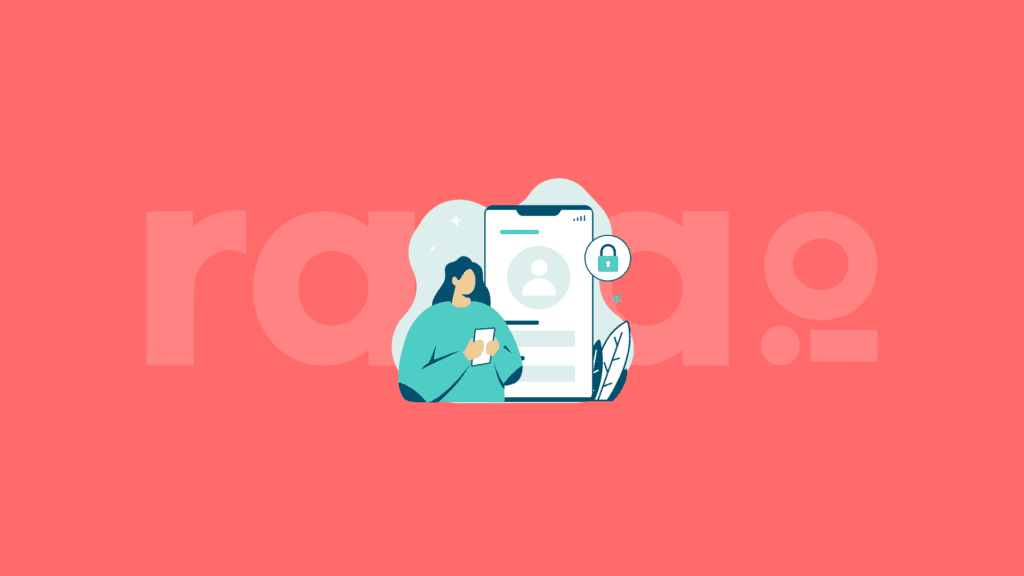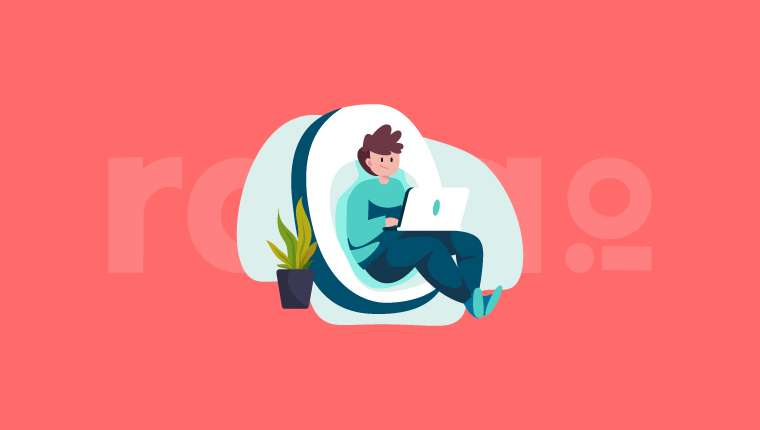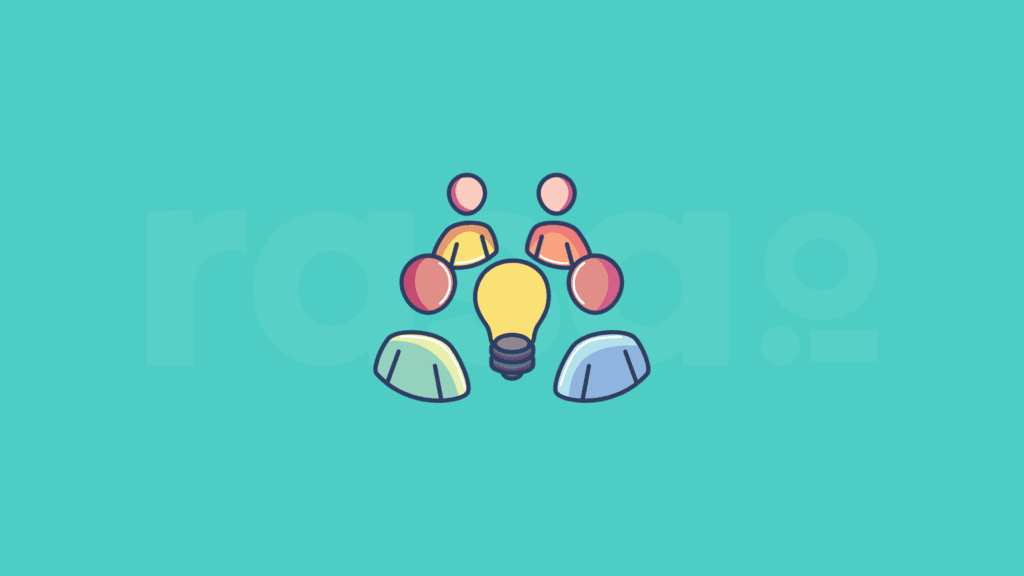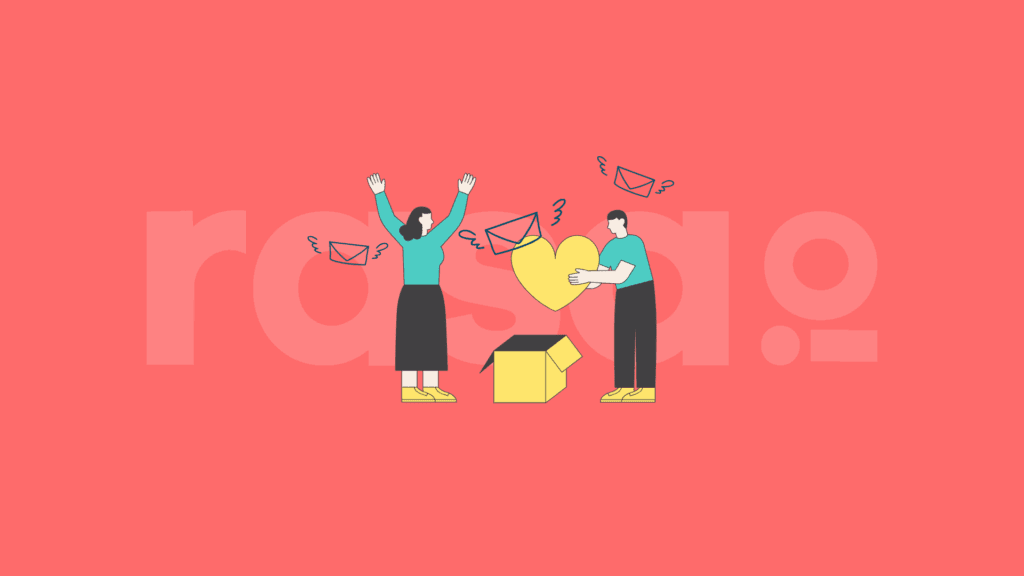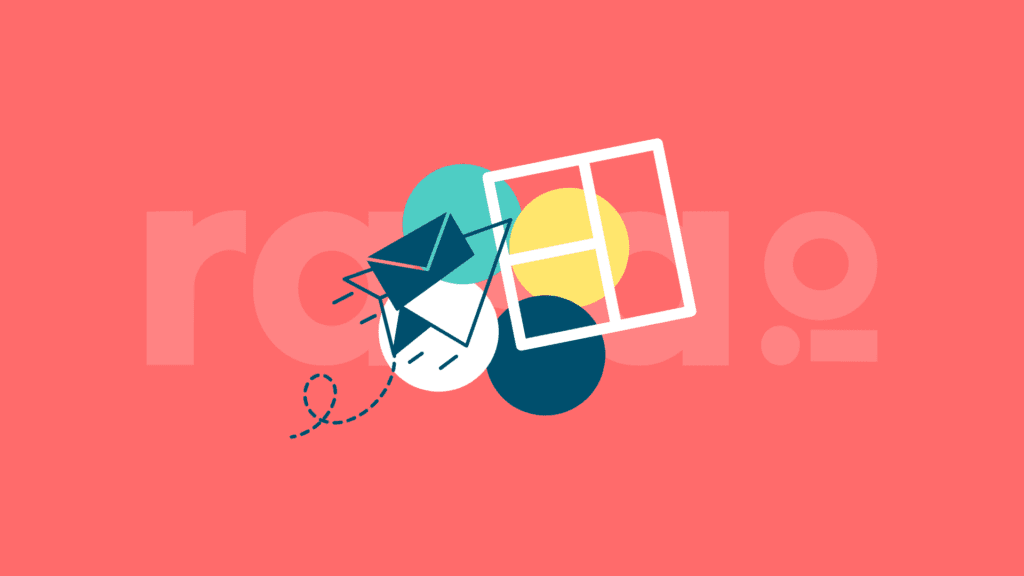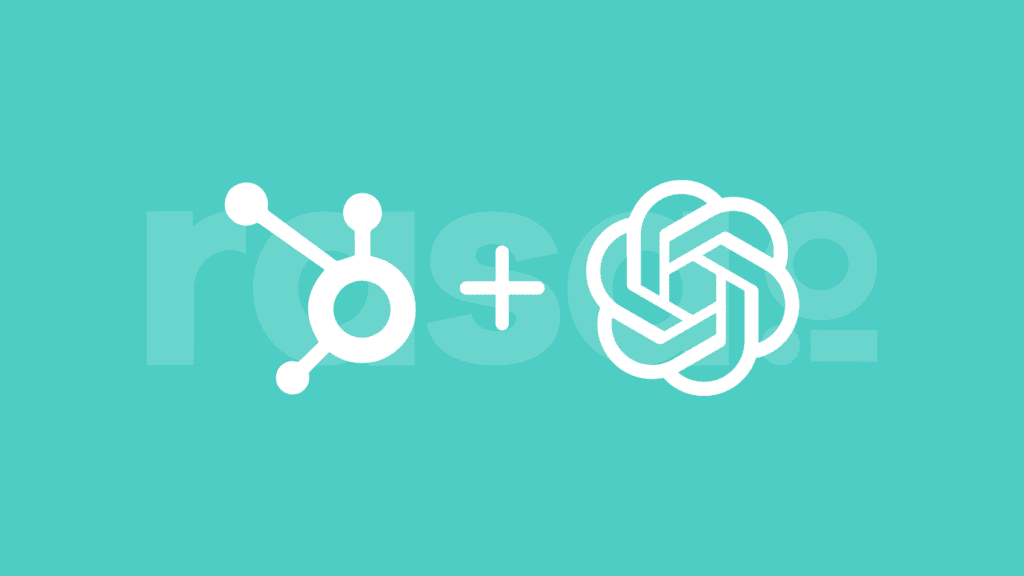Email marketing is one of the most critical elements of marketing strategies. Unfortunately, email recipients are inundated with dozens of marketing campaigns every week, so it’s common for them not to even open messages. How can you change this? One way is through email marketing personalization, which can help you to better engage your audience. Read these email personalization best practices and learn how to use this solution to get the best results.
Why did customers start to hate emails?
Statista says more than 333 billion emails are sent and received daily worldwide. What’s more, the number is predicted to increase every year.
And what does this mean for you as a marketer or business owner? It means that your customers are getting frustrated by emails that “litter” their inbox and don’t bring value to them.
Emails that are sent too often or with irrelevant content are becoming hated. Recipients of email marketing messages expect to receive emails that are well-designed and tailored to all their devices. Hence, attention to every detail is essential here.
Message personalization issues can also be a problem. A lack of personalization or too much of it can cause your recipients to unsubscribe from your email list.
Email personalization can help you increase your marketing results
In a nutshell, email marketing personalization is a way to build a relationship with an audience by creating tailored content for a specific person. To do this, you can use data that was provided by a particular user when they signed up for a subscription (name, company, position) and their recent activity, such as recent purchases or recently attended webinars.
Data shows that 72% of customers admit that only personalized marketing messages tailored to their interests get their attention. By tailoring messages to the needs of the individuals, personalized messages can increase the open rate, click-through, and conversion rate. Campaign Monitor shows that email personalization improves the revenue generated from email marketing by as much as 760%. Tailoring to the needs of individuals makes them more engaged and loyal to a given brand.
As numerous mail personalization stats and reports have shown, personalizing messages can bring many benefits. However, personalization should not be exaggerated to get the best results. According to Adobe’s research, over-personalization can be even more annoying and creepy for the audience than having too little of it. If you over-personalize messages, your customers may feel stalked and stop trusting you.
Therefore, the challenge is to keep the right balance and create a personalization that is not too intrusive yet still allows you to increase conversions.
Tailor your email newsletter to each individual automatically
Utilize our easy-to-use newsletter tool to generate a curated newsletter for each person on your email list.
7 Effective Email Personalization Techniques That You Should Try
1. Segment your audience ✂️
The first step to effective email marketing personalization is subscriber segmentation. According to HubSpot, as many as 78% of marketers say it is the most effective strategy for email marketing campaigns.
During segmentation, you can create various customer segments based on different criteria, such as interests, behavior, demographics, psychographics, location, behavior, buying frequency, purchase cycle, engagement level, and more. Remember that a single contact can be in several separate segments of criteria.
Such segmentation will allow you to better tailor your email campaigns to specific groups of people that have something in common. For example, a company that sells marketing automation software may segment its customers based on company size, industry, revenue, marketing budget, or job title of the decision-maker. By doing so, they can tailor their messaging and offers to each segment’s unique needs and pain points. For instance, the company may create a segment of small businesses with limited marketing budgets and target them with cost-effective solutions. Another segment could include large enterprises with complex marketing needs, offering them more comprehensive and customizable solutions.
You can also create personalized links and send them to specific groups. You could make a dedicated landing page for each segment, which would have perfectly tailored content and address the particular needs of each audience.
For example, you could create a dedicated landing page for people in a specific profession and then specify the features of your products that would be particularly important to those people’s perspectives. If you decide to take this step, don’t forget to optimize your site to get more relevant traffic. Using the on-page optimization tool, you can get the game-changing insights just in several clicks. It automatically analyzes content, links, on-page elements, and dozens of other parameters of your top-performing competitors and gives you hints on where your landing page can be improved to bring the maximum results, both from the standpoints of search performance and user experience.
2. Personalize the subject line 〰️
If you’ve ever wondered how to personalize emails, you’ve probably thought about including your customers’ names in the email subject line. In some cases, this can be a good trick, but when personalizing a subject line, it’s a good idea to tailor it to the needs of a particular audience. It is the best place to show that your message is appropriately personalized and that your recipient will find something of interest there.
For example, you can personalize the email content based on customers’ previous interactions with your product or service. If a specific customer has expressed interest in a particular feature (for instance, if they browsed a page dedicated to this feature), you can send them an email showcasing how it can help solve their problem.
For instance, if you run a company that provides HR management software and your customer is struggling with employee retention, you could email them with the subject line “Employee retention made easy with our HR software” and personalize the content by showcasing how your software can help reduce employee turnover and improve overall retention rates.
By personalizing the email content for each customer segment and addressing their unique challenges and needs, your company can establish a stronger relationship with its customers and increase the likelihood of conversions.
If you want to learn more about this, read the article on crafting better subject lines to increase conversions.
3. Use dynamic content 🧨
Today’s marketing tools allow for sending not only personalized texts but also images. Dynamic content enables you to automatically send emails with images that can change depending on the individual user’s preferences.
You can create one email, but the images will change depending on the person. This technique takes even less time than segmentation because you do not have to create multiple texts for different groups of recipients. The images are matched automatically and can be based on your users’ responses in the subscription form, their historical data, or their recently viewed products.
For example, say you run a home decor store. By creating dynamic content, you can add the same links to each category (for example, www.yourcompany/products/plants) and match the flower image to the flowers the users on your site have searched for recently.
It will undoubtedly bring better results than adding an image of the same plant for all subscribers since they may have specific preferences and be interested in different things.
Another email personalization example with dynamic content would be a graphic announcing a sale or with a discount code. In this case, you can match the graphic with the person’s most recent or most frequently viewed product to increase the chances that your offer will entice them to purchase.
4. Try various types of recommendations ⭐️
Try different ways to recommend products or services to your users.
Collecting data about your users gives you many opportunities to tailor content to them that can increase their conversions. For example, in B2C marketers often create separate messages for:
- Users who haven’t made a purchase yet – you can recommend offers similar to what they’ve recently viewed or best-selling products.
- Customers who recently bought a product – You can send them product recommendations that match their last purchase.
- People who haven’t bought anything for a long time – You can send them an email with recently reviewed products or new products they might be interested in.
What about the B2B industry?
Here, too, you can segment your users. For example, you can create a group that includes the following:
- Former customers
- Current customers
- Contacts that you have identified as MQLs
- Contacts that you have classified as SQL
- People in specific roles
- People representing specific industries
- People you have identified as “engaged and “not engaged” (based on the open rate of your emails)
- People who downloaded specific material from your site (ebook, report, etc.)
Remember to tailor your segmentation to your business’s specific needs and characteristics. Don’t be afraid to test and find the best solution for your business. It’s important to track the results of each campaign and draw conclusions for the future. It will help you create campaigns that work well with particular audiences.
5. Send personalized offers 🎁
Don’t waste your audience’s time and tailor messages to interest them. According to Salesforce, 52% of customers expect personalized offers.
To do this, send personalized product recommendations that are consistent with their previous behavior on your site. For example, if your customer recently read an article on your blog about lead generation, you could try sending them an offer for a paid course on the topic. Going forward, if they just bought a course from you, you could offer them the opportunity to attend your conference on that topic.
Or if you offer online courses and your user was recently looking for courses to improve his English skills, send him recommendations for classes tailored to his needs. Below you will find an example of such an email sent by the Coursera platform:
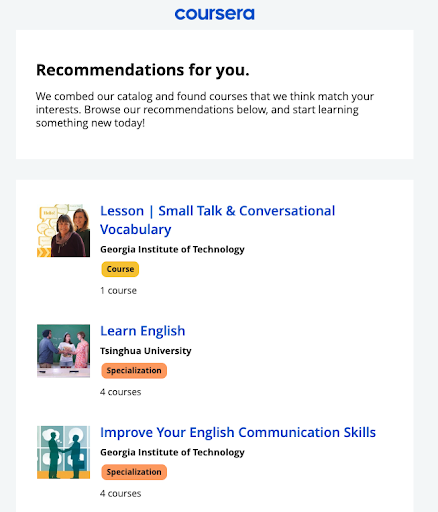
6. Remind about important events 🔔
To build a relationship with your customers, it’s a good idea to show that you remember important dates. Therefore, another way of sending personalized marketing emails is to celebrate important dates, such as birthdays. These could be special discount coupons for customers on their birthday (you can ask for their date of birth in the subscription form) or your company’s anniversary.
An exciting example is the email campaign by WordPress. An email was sent to users to remind them of the anniversary of their account creation. In the email, you’ll find information about various offers that might be useful for someone who has set up a website with them and is looking for tools to customize it accordingly.
7. Try behavioral triggering ✅
Behavioral triggering is a way to respond to specific customer behavior associated with your brand. It involves sending automated messages after a particular action, such as buying a product or signing up for a subscription.
For example, you can set up automatic sending of an invoice or booking confirmation. It will save your customers time because they will not have to search in their customer accounts or write to you asking to send particular files or information.
For subscription sign-ups, you can send an introductory email or a series of welcome emails to let new subscribers know more about your company and its offers.
Another attractive option is re-engagement emails sent to users who haven’t interacted with your brand in a long time.
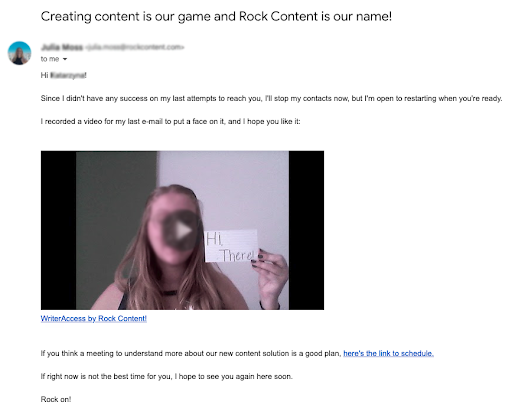
It’s time to implement email marketing personalization and monitor the results.
If you are not yet using email marketing personalization, we advise you to do so as soon as possible. Remember, however, that every audience is different, so it’s a good idea to test various options and keep track of the results of each campaign. For example, if you don’t know which email title is best for a particular segment, you can set A/B tests and see what hits your audience better. You can also use advanced solutions such as AI Personalized Newsletters, which use advanced AI techniques to personalize content for each subscriber.




